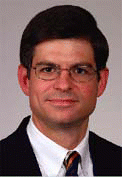Contact the Editor: ENToday welcomes your feedback about our publication! Contact us using the information below:
Explore This Issue
March 2008Experts agree that continuous positive airway pressure (CPAP) is the gold standard for management of obstructive sleep apnea. Although several types of surgical procedures have been used to treat obstructive sleep apnea (OSA), the evidence base for these procedures is suboptimal, explained Scott E. Brietzke, MD, Director of Pediatric Otolaryngology at Walter Reed Army Medical Center in Washington, DC, who moderated a miniseminar on evidence-based OSA at the annual meeting of the American Academy of Otolaryngology-Head and Neck Surgery.
Diagnosis of OSA: Home Sleep Studies vs Laboratory Polysomnography
One hotly debated issue is use of lab versus home sleep studies for diagnosing obstructive sleep apnea. This is a timely topic. Medicare is currently debating whether to cover home sleep studies. The Institute of Medicine recognizes that 50 to 70 million Americans suffer from sleep disorders and there is a need for portable technology, stated M. Boyd Gillespie, MD, Associate Professor of Otolaryngology, Head and Neck Surgery and Director of the Medical University of Carolina Snoring Clinic in Charleston, SC.
The current standard for sleep assessment is laboratory polysomnography, which provides a high-quality sleep evaluation in a monitored setting. However, this type of test may not be widely available and is usually expensive. Alternatively, modified portable sleep apnea diagnostic devices that provide information on respiratory airflow and effort, heart rate, and oximetry are now available. These home sleep studies allow for the diagnosis of obstructive sleep apnea but cannot be used to diagnose less common disorders such as upper airway resistance syndrome or periodic limb movement disorder. Dr. Gillespie focused his remarks on modified portable sleep apnea testing versus polysomnography.
Home sleep studies are simple enough to use at home, and are more readily available and less costly than polysomnography. Further, home sleep studies are conducted in a natural sleep environment and analysis of the data is centralized, but there are concerns about accuracy with home sleep studies, Dr. Gillespie said. Sleep cannot be staged and respiratory disturbance index (RDI, used as a measure of sleep apnea) may underestimate the degree of apnea/hypopnea. It’s possible that a high rate of failed recordings can occur in an unattended setting [with home sleep studies], he noted.
A Medline search of available studies comparing home sleep studies and polysomnography yielded 14 randomized controlled trials with a total of 873 subjects. Eleven of the 14 studies found no difference in accuracy of identifying sleep apnea between home sleep studies versus polysomnography. In three of the studies, home sleep studies underestimated RDI compared with polysomnography.

Leave a Reply